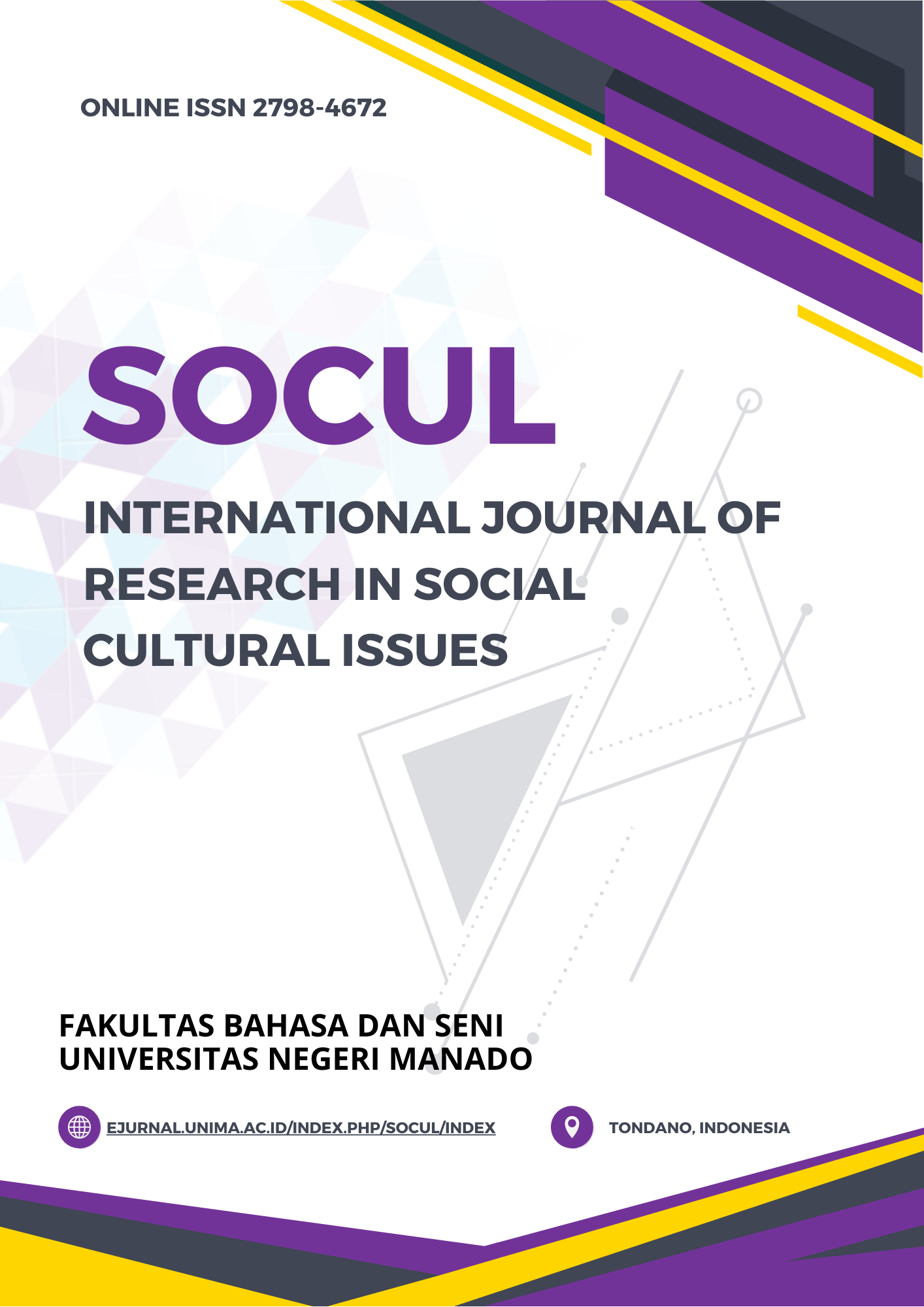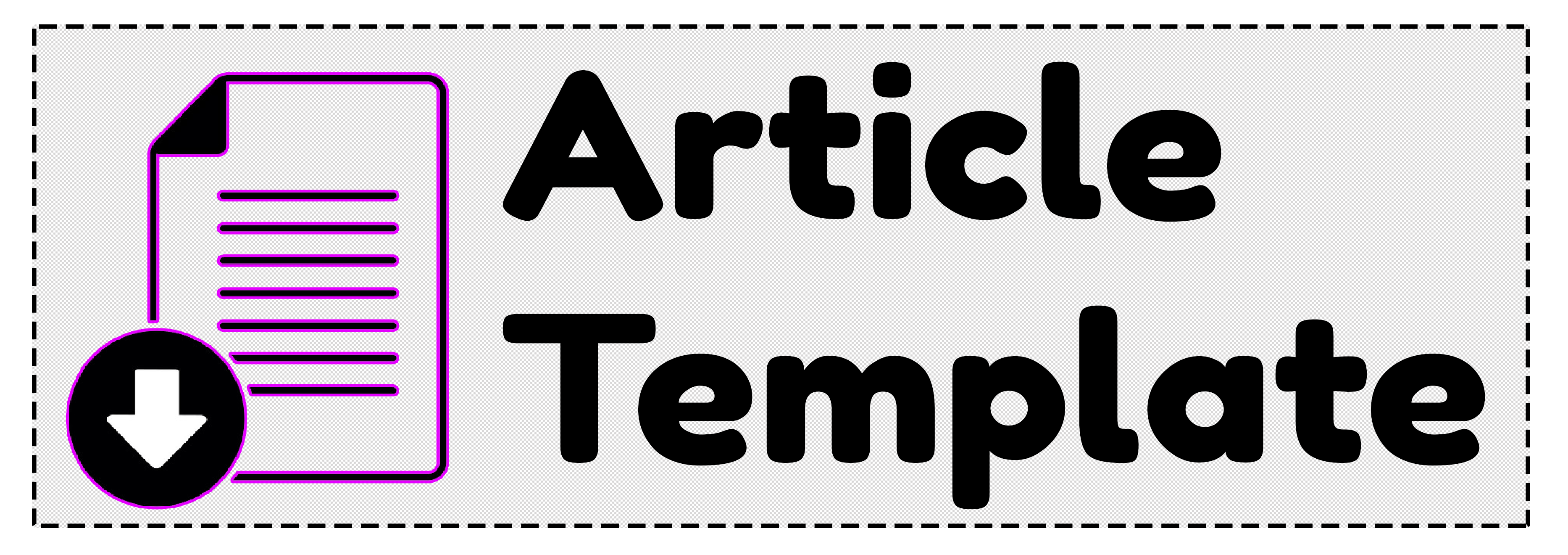THE EFFECTIVENESS OF TONGUE TWISTERS IN IMPROVING JUNIOR HIGH SCHOOL STUDENTS’ PRONUNCIATION
A PRE-EXPERIMENTAL STUDY AT SMP NEGERI 3
DOI:
https://doi.org/10.53682/soculijrccsscli.v3i4.12472Keywords:
Tongue Twister, Teaching Technique, Pronunciation teaching, Speaking Skills, English Language TeachingAbstract
For many Indonesian learners, mastering English pronunciation is challenging, especially when dealing with unfamiliar sounds, proper stress patterns, and natural rhythm. This study set out to investigate whether Tongue Twisters could be an effective way to address these issues for seventh-grade students at SMP Negeri 3 Tondano. Using a quantitative pre-experimental design with a one-group pre-test and post-test format, the research involved 13 purposively selected students from a BINSUS (Binaan Khusus) class. A pronunciation test adapted from Anas Sudijono’s (2012) rubric measured five aspects: consonants, vowels, stress, intonation, and rhythm, along with tongue twisters. Data were gathered through a pre-test, a single treatment session using Tongue Twisters, and a post-test. The results were analyzed using descriptive statistics, normality testing, and a paired samples t-test in SPSS. Findings showed that the mean score improved from 40.59 in the pre-test to 63.24 in the post-test (scale 0–100). The paired samples t-test confirmed that this improvement was statistically significant (t = -5.592, p < 0.05), indicating that the technique effectively enhanced articulation, vowel accuracy, stress placement, and overall prosody. Beyond measurable progress, students also showed greater engagement and enjoyment during pronunciation practice. These results suggest that incorporating Tongue Twisters into classroom activities can provide both linguistic benefits and a more motivating learning experience for junior high school students.
References
Ary, D., Jacobs, L. C., Irvine, C. K. S., & Walker, D. (2018). Introduction to research in education (10th ed.). Cengage Learning.
Cahyani, R. D., & Panjaitan, E. (2020). The effect of using tongue twister to improve students’ pronunciation mastery. Jurnal Serunai Bahasa Inggris, 12(2), 108–115.
Campbell, D. T., & Stanley, J. C. (1963). Experimental and quasi-experimental designs for research. Houghton Mifflin Company.
Celce-Murcia, M., Brinton, D. M., & Goodwin, J. M. (2010). Teaching pronunciation: A course book and reference guide (2nd ed.). Cambridge University Press.
Cintron, K. M. (2024). The use of tongue twister. http://www.aminlimpo.com
Creswell, J. W. (2014). Research design: Qualitative, quantitative, and mixed methods approaches (4th ed.). SAGE Publications.
Derwing, T. M., & Munro, M. J. (2005). Second language accent and pronunciation teaching: A research-based approach. TESOL Quarterly, 39(3), 379–397.
Field, J. (2018). [Details missing—please add full title, publisher, and location if available.]
Gilakjani, A. P. (2012). Pronunciation refers to the production of sounds that we use to make meaning. [Publication details incomplete—please verify source.]
Gonzales, N. I. (2009). Learning English with tongue twister. Lulu Press Inc.
Hampp, P. L., Kumayas, T. A., & Lengkoan, F. (2021). Synthesizing grammar and structure problems faced by Indonesian TOEFL participants. Jurnal Pendidikan Bahasa Inggris Undiksha, 9(1), 64–68.
Juniarti, N. T. (2019). Using tongue twister technique to improve students’ pronunciation ability at the first grade of SMK Negeri 2 Parepare [Doctoral dissertation, IAIN Parepare].
Laurea, D. (2015). Pronunciation refers to how we produce the sounds that we use to make meaning when we speak. [Publication details incomplete—please verify source.]
Lengkoan, F., & Olii, S. T. (2020). Self-correction in writing a paragraph. CELT: A Journal of Culture, English Language Teaching & Literature, 20(2), 378–386.
Liando, N. V., Sahetapy, R. J., & Maru, M. G. (2018). English major students’ perceptions towards watching English movies in listening and speaking skills development. Advances in Social Sciences Research Journal, 5(6).
Lutfiani, D., & Indri, A. (2017). Using tongue twister to improve students’ pronunciation. ELLITE: Journal of English Language, Literature, and Teaching, 2(2), 110–115.
Manuas, M. J., Tatipang, D. P., & Pratasik, G. (2022). Reading motivation of tenth grade students at SMA Advent Unklab Airmadidi. [Publication details incomplete—please verify source.]
Maru, M. G., Mokalu, J. M., Saroinsong, H. Y., Mogea, T., & Liando, N. (2022). Students’ perception toward e-learning experience on writing skill during COVID-19 pandemic. Syntax Literate: Jurnal Ilmiah Indonesia, 7(5), 5861–5884.
Pallant, J. (2020). SPSS survival manual: A step by step guide to data analysis using IBM SPSS (7th ed.). Routledge.
Prošić-Santovac, D. (2009). The use of tongue twisters in EFL teaching. Annual Review of the Faculty of Philosophy / Godišnjak Filozofskog Fakulteta, 34.
Puspita, N., Wachyudi, K., & Hoerniasih, N. (2023). Tongue twister method in teaching pronunciation: A narrative inquiry of pre-service English teacher. Edukasiana: Jurnal Inovasi Pendidikan, 2(3), 197–203.
Rachmawati, R., & Cahyani, F. (2021). Pengaruh penggunaan video YouTube terhadap peningkatan pronunciation skill mahasiswa MKU Bahasa Inggris IAI Al-Khoziny Sidoarjo. Widyaloka, 8(1), 1–16.
Setyowati, L., Ambarsari, Y., & Muthoharoh, N. B. (2017). Pelatihan pelafalan kata-kata bahasa Inggris dalam rangka meningkatkan kualitas pengajaran guru-guru Sakinah English Course. E-Dimas, 8(1).
Sudijono, A. (2012). Pengantar statistik. Raja Grafindo Persada.
Sugiyono. (2018). Metode penelitian kuantitatif. Alfabeta.
Susnawati, K., & Marhaeni, A. A. I. N. (2020). The effect of language games with audio-visual aids on students’ speaking competence at fourth graders of Tunas Daud Elementary School. Journal of Education Research and Evaluation, 4(1), 73–81.
Uttley, J. (2019). Power analysis, sample size, and assessment of statistical assumptions—improving the evidential value of lighting research. LEUKOS, 15(2–3), 143–162. https://doi.org/10.1080/15502724.2018.1533851
Wahyu, R. T., Liando, N. V. F., & Rorimpandey, R. (2023). The implementation of TikTok as media teaching to improve students’ speaking ability. JoTELL: Journal of Teaching English, Linguistics, and Literature, 2(12), 1551–1564.
Yuniar, Y., Pahlevi, M. R., & Hoerniasih, N. (2021). The role of tongue twister to improve the students’ speaking skill. INTERACTION: Jurnal Pendidikan Bahasa, 8(2), 335–345.














